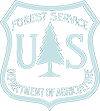About
Wildfire is an issue of national importance. In 2015, approximately $1.79 billion of the U.S. Forest Service annual budget, or 52%, was spent fighting wildfires. This is the most money ever spent on U.S. wildfires, and it sharply reduced funding to other valuable Forest Service programs, several which work to reduce wildfire hazard. Support for use of prescribed fire to achieve forest management objectives is increasing yet faces challenges related to population growth and public acceptance, smoke impacts on air quality, and safety. The National Cohesive Wildland Fire Management Strategy (Cohesive Fire Strategy), by promoting collaboration and communication among diverse stakeholders, seeks to address these complex challenges.
Approximately 45,000 wildfires and 1 million acres burn every year in the Southeastern U.S. A recent study by NOAA suggests that the risk of very large fire weeks will increase by 300% in this region by mid-century (2041-2070).* Prescribed fire is used more frequently in southeastern states than other US regions, where approximately 6.5 million acres for forest management and 3.8 million acres for agriculture are burned annually. Though wildland fire has a long history in the Southeast, continuing to minimize the risks associated with it are essential to increasing the region’s fire-resiliency. The Cohesive Fire Strategy provides a framework to achieve this.
*Barbero, R., Abatzoglou, J.T.; Larkin, N.K.; Kolden, C.A.; Stocks, B. 2015. Climate change presents increased potential for very large fires in the contiguous United States change presents increased potential for very large fires in the contiguous United States. International Journal of Wildland Fire.
History of Wildland Fire in the Southeast
Fire has long played a critical role in the landscape and ecosystems across the Southeast. Early colonists who arrived on the land that would become the U.S. commented on the Native Americans' extensive use of wildland fire to achieve several land management objectives, including hunting habitat, travel, and protection. This frequent fire use helped shape the landscapes colonists experienced upon arrival, such as the iconic longleaf pine ecosystem.
Periodic wildfires occurred from both lightning and human-originated ignitions and were allowed to burn until they extinguished themselves. Oftentimes, the same landscape would burn about every 3 to 8 years. A lack of organized fire suppression resources allowed this periodic burning to occur, and residents accepted it as a normal part of their lives. The majority of forests in the Southeast are fire-dependent ecosystems which thrived from the periodic burning.
Wildland fire continued to be used as a management tool in the U.S. as the nation grew. By the early 20th century, the U.S. government became concerned that fire limited forest regeneration and health, and began an extensive fire prevention campaign in 1944. Smokey Bear was the symbol of this campaign, stressing to the public that “only you can prevent forest fires!” This widely promoted prevention campaign caused fire to be excluded from forests, leading to a buildup of hazardous fuel, with landscapes and ecosystems being fragmented or lost.

- Credit: By Forest Service, United States Department of Agriculture, in cooperation with the Association of State Foresters and the Advertising Council [Public domain], via Wikimedia Commons
Even though fire exclusion had undesirable effects, such as more catastrophic wildfires, the prevention campaign continued. The increased occurrence of catastrophic wildfires, cost of suppression activities, and loss of natural resources and homes eventually led to wildland fire policy changes.
These changes were an attempt to educate the public that all fire in forest is not bad, and that fire is a valuable tool in restoring and maintaining the healthy forests and fire dependent ecosystems and landscapes as they should exist across the entire U.S.
Wildland fire management in the Southeastern US is complex and multi-faceted. The significant threat posed by unplanned or undesirable fires threatens the lives and well-being of emergency responders and the public; damages or destroys homes and property, results in loss of marketable forest products, and can have undesirable effects in the natural environment. Although the Southeastern region includes just thirteen states, the Commonwealth of Puerto Rico and the U.S. Virgin Islands, it leads the nation in the number of annual wildland fire ignitions. This management challenge is exacerbated by rapid population growth, rapid expansion of wildland urban interface (WUI) areas, and the fragmentation of land ownership in the region.
In 2011, ten firefighters lost their lives during fire management in the Southeast (NIFC 2011). During that same year, in Texas alone, 3,993,716 acres were burned by wildfires, with 5,738 structures destroyed, including 2,946 homes (Texas Forest Service 2012). Wildfire threat to homes is consistently above average due to the number and density of homes throughout the Southeast.
Over the past decade, population growth in the Southeast has outpaced any other region in the country. According to the 2010 U.S. Census, the South's population grew 14.3 percent between 2000 and 2010 to reach 114.6 million inhabitants at the end of the decade. As of 2010, six of the ten fastest growing counties were in Southeastern states along with a total of 36 percent of the nation's population (U.S. Census Brief, 2010). In the past, the southeastern fire and land management community has relied on cultural and historical acceptance of prescribed fire to facilitate their implementation of appropriate management activities.
New residents, however, are often unfamiliar with the use of fire as a valuable management tool. This population and an accompanying significant demographic shift, along with other factors, are creating new challenges for the fire management community. It is increasingly more difficult for agencies, organizations, and landowners to plan for and respond effectively to wildfire, while protecting vulnerable WUI communities and providing for firefighter safety. The Southeast has a complex fire environment unlike any other in the nation, with interrelated critical controlling factors influencing wildland fire management:
Wildfire Activity: Between 2001 and 2010 nearly half of all national ignitions and over 40 percent of the country's large wildfires occurred in the Southeast.
Large and Rapidly Expanding WUI: As of 2000, more than half of WUI acres were located within the Southeast.
Smoke Management Challenges: Smoke impacts safety, health, and quality of life. Smoke-related impacts challenge the fire management community to implement management and response activities safely.
Year-round Fire Season: wildland fires burn all 12 months of the year in the Southeast, stressing firefighting capacity and resources.
Area Protected: Over 420 million terrestrial acres are protected from wildfire by federal, Tribal, state and local agencies with just under half (200 million acres) being forested lands.
Privately Owned Forestland: Nearly 90 percent of forestland in the Southeast is owned by over five million private landowners.
Prescribed Burning: The Southeast leads the nation in prescribed burn acres accomplished on silvicultural land; but issues related to capacity, smoke, and liability are significant obstacles to encouraging practitioners to increase prescribed burning. Prescribed fire must occur at a much greater frequency than elsewhere in the country as a result of the region's rapid vegetation regrowth rate.
Invasive Species: Many invasive species spread quickly after a wildfire event, contributing to fuel loading and otherwise influencing forest health (e.g., cogongrass (Imperata cylindrica) spread).
Working Forests: Traditional and new economically viable forest markets support local economies, help curb hazardous fuel accumulation, and serve as a source of local wildfire knowledge, but the long-term strength of these markets is unknown
Strong Interrelationships in the Fire Management Community: An extensive history of excellent cooperation and working relationships exists between agencies, organizations, and local fire departments with other wildland fire management organizations, resulting in a safer, more effective response and collaborative planning for future occurrences.
Fire Departments: An extensive network of fire departments, including mostly volunteer fire departments, are responsible for most initial response to wildfires throughout the region.
History of Policies Leading to the Cohesive Fire Strategy
Following an intense fire season, the National Fire Plan was developed in the year 2000. This plan had five major objectives and a 10-year strategic plan (later revised in 2006):
- Firefighter response improvement
- Rehabilitation on landscapes affected by wildland fire
- Reducing hazardous fuels
- Assistance to communities
- Committing to the Wildland Fire Leadership Council
In 2002, the Healthy Forest Initiative expanded on two of these objectives--reducing hazardous fuels on federal lands and promoting community involvement in planning for fire protection. The 2003 Healthy Forest Initiative Act provided the legislative power to implement the initiative, but there was still a considerable disconnect between federal and state agencies and other organizations involved in wildfires. The 2009 Federal Land Assistance, Management, and Enhancement (FLAME) Act directed the U.S. Departments of Agriculture and Interior to develop a unified national strategy for wildland fire management in collaboration with all stakeholders. From this act, the National Cohesive Wildland Fire Management Strategy (Cohesive Fire Strategy) was born.
No single agency, organization, or landowner can adequately address complex and interrelated wildland fire challenges on their own. The Cohesive Fire Strategy is a collaborative, three-phase effort to create a landscape-level national fire strategy that addresses the increasingly complex challenges of wildland fire management in the U.S. This national effort is novel in that it has encouraged participation by all individuals and entities with a stake in fire management as partners during the strategy’s development. This diverse stakeholder group includes federal and state land management agencies, local governments, private landowners, environmental groups, Tribal groups, fire professionals, non-governmental organizations, and others. The Cohesive Fire Strategy effort also marks the first time that geographic regions of the country have had an opportunity to provide locally-specific input for incorporation into a national strategy. Stakeholders from the Southeast have engaged in the Cohesive Strategy effort during the entire process. During Phase I, national goals were established and a framework for the creation of the strategy was developed. In Phase II, the Southeastern region identified three regional goals and objectives that highlighted challenges, resources, and evolving opportunities unique to the Southeast.
The goals identified are:
- Restore and Maintain Landscapes: Landscapes across all jurisdictions are resilient to fire-related disturbances in accordance with management objectives.
- Fire-Adapted Human Communities: Human populations and infrastructure can withstand a wildfire without loss of life and property.
- Wildfire Response: All jurisdictions participate in making and implementing safe, effective, efficient risk-based wildfire management decisions.
The Southeastern region was involved in selecting regional alternatives as part of the Phase III process. These regional alternatives focus on identifying specific actions and activities that would best help achieve regional objectives while retaining maximum flexibility for land managers to determine the most appropriate management activities for their property. Five key values important to Southeastern stakeholders were identified early in the Cohesive Fire Strategy process, and helped guide the development of regional alternatives, along with the regional goals and objectives developed during Phase II:
- Firefighter and Public Safety
- Marketable Products
- Ecological Services
- Cultural values
- Property Protection
Actions and activities from Phase II that were considered best able to enhance regional values and make progress towards achieving regional goals were identified for each of the five value areas. The goal of this process was to identify emphasized alternatives which, using a scientifically informed approach, would potentially have the greatest positive impact in each value area, developing a suite of potential choices to be used in combination or singly. The diversity of ecosystems, land management goals and landscapes across the Southeast means that a single solution will not work for everyone, thus requiring the development of a suite of potential choices to be used in combination or individually. Additionally, with nearly 90 percent of Southeastern land owned privately, decisions cannot be made at the state or regional level for the vast majority of landholdings. Instead, partners in the Cohesive Strategy may, moving forward, work collectively with land managers and landowners, using the best available information, to encourage and inform their decision-making process to help address issues and challenges related to wildland fire. Twenty-five actions were identified from the Phase II and were consolidated into the action plan.
The development of the Cohesive Fire Strategy has been guided by the Southeastern Regional Strategic Committee (RSC), comprised of representatives of key stakeholders in the fire management community, and heavily informed by stakeholder input. In the last two years alone, more than 1000 individuals have provided comments, participated in forums, meetings, or responded to online survey requests which have helped guide the Cohesive Fire Strategy process in the Southeast. At the beginning of Phase III of the Cohesive Fire Strategy, a regional risk analysis was developed which built on the regional strategy and identified regionally-specific values. The regional risk analysis also identified 25 actions. The Phase III regional action plan serves as a roadmap for the implementation of the Cohesive Strategy, which began in the spring of 2013 and continue to 2018, until renewal.
The Southeastern Regional Action Plan contains six overarching strategies and 23 actions, grouped around the five values and a set of identified barriers to success. Collectively, the 23 actions contain 124 separate implementation tasks. Although this may sound daunting, spread out over five years and broken into short, medium and long-term periods, along with numerous partners offering to serve as “lead” on individual tasks, moving these tasks forward is realistic. It will no doubt take extraordinary collaboration, but that is the primary intent behind the Cohesive Fire Strategy in the first place.
The success of the Cohesive Fire Strategy in the Southeast depends on the continued engagement and support of stakeholders in the wildland fire management community as well as the activation of novel stakeholders. This will likely include individuals and groups that may not consider themselves stakeholders in wildland fire management.















